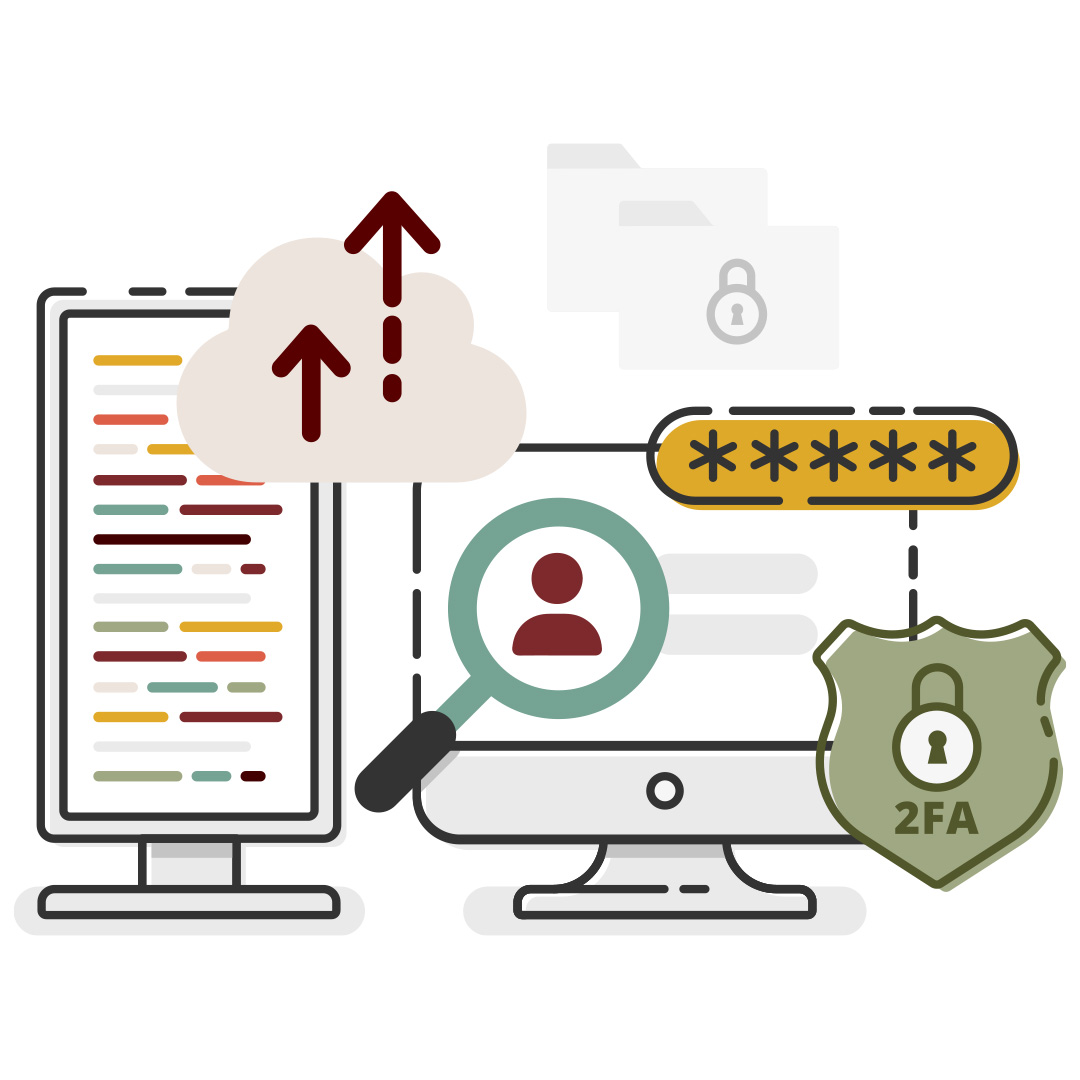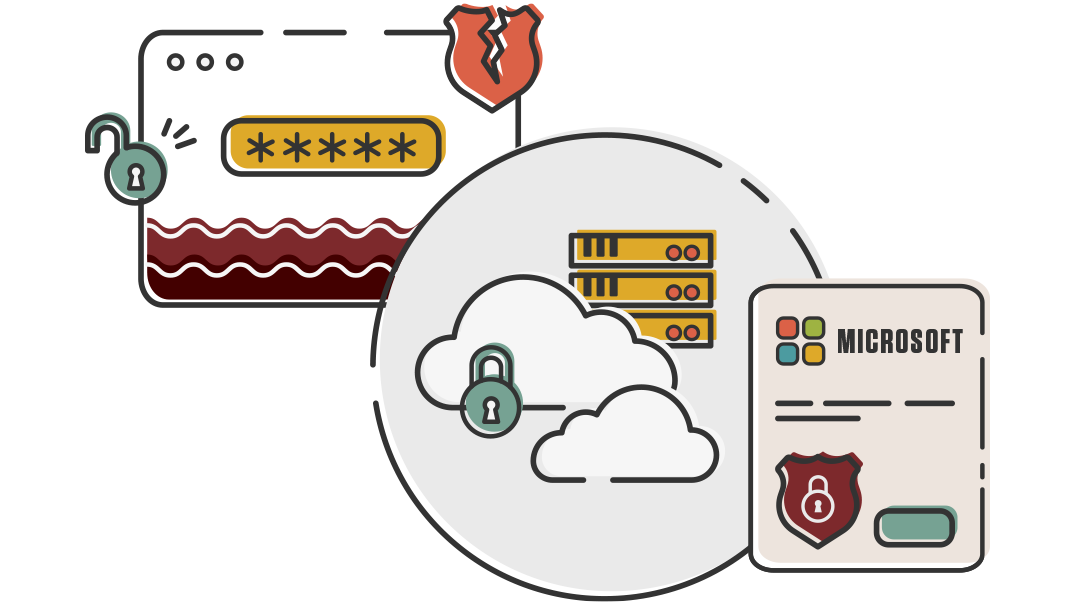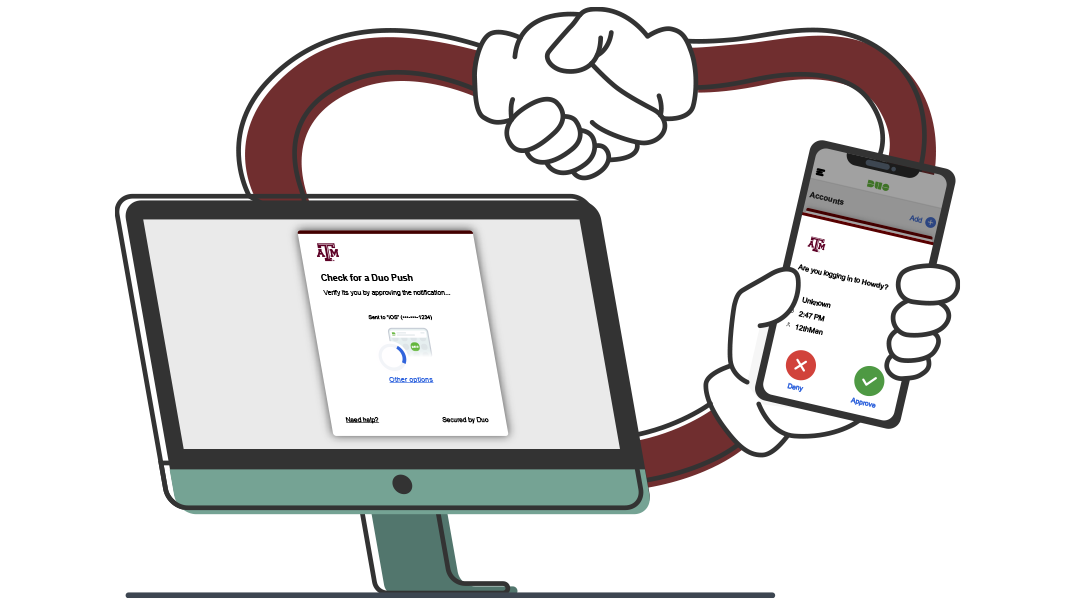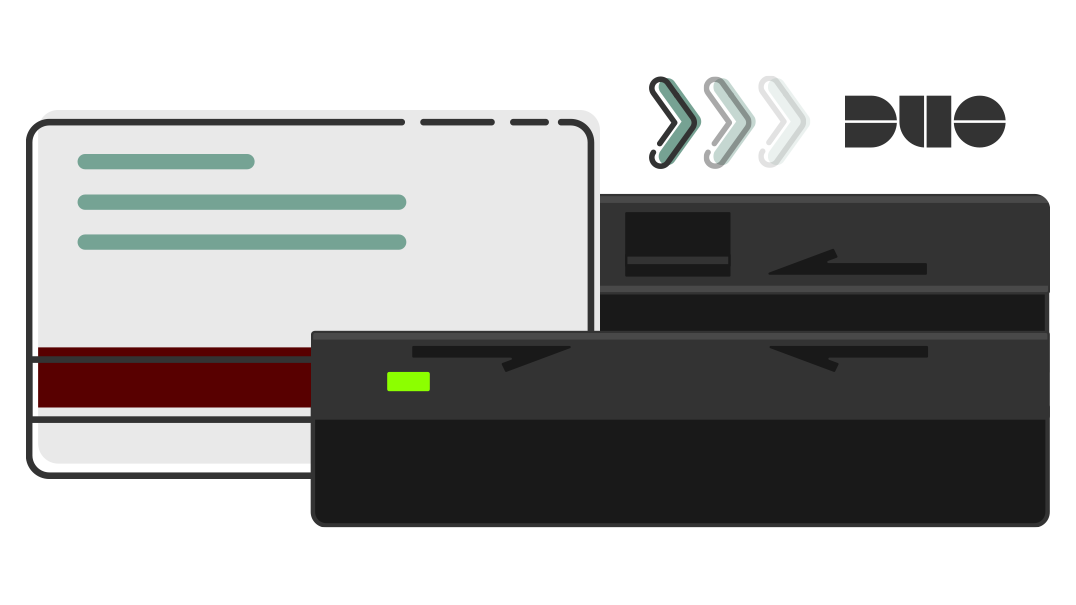Cybersecurity
Fortifying our security

Each month, more than 99 percent of all incoming network traffic at Texas A&M is identified as malicious and blocked, meaning that more than 37 billion cyber attacks are stopped. These attacks can put higher education institutions like Texas A&M at risk every day, especially since we operate one of the largest campus data networks in the country. On any given day, Texas A&M has roughly 120,000 unique devices on the network and manages thousands of terabytes of research data.
Key to our efforts is a strong partnership with the security teams across The Texas A&M University System. By blocking hundreds of millions of attacks daily, Technology Services and our partners are able to enhance the university’s security shield and discover solutions to current and future safety challenges.
Consistent efforts continue to educate the campus community on staying cyber secure, but new progress has been made this past year to further enhance three primary areas: two-factor authentication, cloud-based solutions and asset management.
In addition to upgrading Duo, the university’s two-factor authentication interface, Technology Services is in the process of installing Duo self-service kiosks across campus, allowing for real-time device enrollment in a secure environment. The migration to Microsoft 365 allowed Technology Services to implement dual security layers to all Texas A&M email services, reducing the opportunity for accounts to be compromised. In Spring 2023, a cybersecurity asset management system will be launched to effectively monitor every technology asset on campus and help prevent security breaches.
Texas A&M is a national leader in cybersecurity, and by continuing to invest in the needed infrastructure to protect our campus and the people who work here, we are committed to fortifying our security so we can focus on uninterrupted teaching, research and service efforts.
Achievements
A single source of truth for campus technology
With Texas A&M University being the largest university in Texas and among the largest in the nation, it’s no surprise a solution is needed to merge multiple information sources and streams into a single source. Axonius, a cybersecurity asset management system, was procured in 2022 to gather data from various systems and provide a holistic view of the computers, servers and other technology assets in use on campus. In order to implement Axonius, Technology Services collaborated with IT professionals across the university to pull all relevant system data into the tool. Once fully implemented, Axonius will streamline asset management, making it easier to effectively monitor tens of thousands of campus IT assets in a single dashboard.

Modern authentication keeps Texas A&M safe
Technology Services ensures Texas A&M University is safe from millions of cyber attacks each year. Securing email is essential as more than 75% of cyberattacks begin with an email message. After migrating the on-premise Texas A&M Exchange email to the cloud-based Microsoft 365, Technology Services saw an opportunity to ramp up email security by moving all Microsoft 365 accounts from basic authentication to modern authentication by September 1, 2022. Modern authentication is more secure because it requires multi-factor authentication like DUO, a capability not possible with basic authentication.
Throughout the spring and summer, Technology Services collaborated with divisions, units and departments across campus to move all Microsoft 365 email accounts to modern authentication. The process involved targeted communication efforts and hands-on assistance from distributed IT professionals and Help Desk Central, including extensive self-help documentation and virtual Q&A sessions for staff and faculty. A dynamic PowerBI Dashboard was also created so campus IT professionals could track which users and devices were still using basic authentication. This proactive approach prevented numerous obstacles as staff and faculty began moving to new organizations during early centralization efforts.
All accounts were transitioned to modern authentication well before the start of the fall semester. By successfully completing this effort, Technology Services ensured Texas A&M email accounts are safer and university IT services are less susceptible to attack by compromised accounts.

Duo interface changes
In fall 2022, Technology Services upgraded its Duo two-factor authentication interface, which makes logging into Texas A&M applications simpler and more secure. Technology Services made this change ahead of schedule as the Duo vendor required all interfaces to be updated before early 2023. This implementation timeline allowed Technology Services to avoid interference with the beginning or end of an academic semester.

Duo enrollment stations
Technology Services is making Duo two-factor enrollment easier with a self-service kiosk on the main Texas A&M campus at Help Desk Central. This kiosk enables the campus community to enroll a second device by swiping any Texas A&M ID at the kiosk. Technology Services will unveil more of these kiosks to the campus community in 2023.